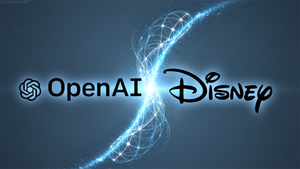Breast Cancer Index reaffirmed as a significant predictive and prognostic diagnostic tool to personalize extended endocrine decisions
Hologic, Inc. (Nasdaq: HOLX) and its subsidiary, Biotheranostics, Inc., today announced new data demonstrating that Breast Cancer Index™ (BCI) not only predicts preferential recurrence-prevention benefit from extended endocrine therapy (EET), but also predicts the overall benefit/risk and likelihood of improved health outcomes from EET in certain hormone receptor positive (HR+) patients. New data also confirm two biomarkers used in BCI are interconnected molecular drivers of assessing recurrences in HR+ breast cancer. These findings were presented in Spotlight Sessions at the 2021 San Antonio Breast Cancer Symposium (SABCS), which is being held from December 7-10.
“Extended endocrine therapy often comes with tolerability challenges and even significant adverse events,” said study author Marc Buyse, ScD, Associate Professor of Biostatistics at Hasselt University in Belgium. “We found the data to have considerable implications for patient compliance and joint decision-making with their healthcare providers, as patients have a more comprehensive picture of the net benefit of staying on EET so they can better assess the challenges that can come with treatment.”
BCI Significantly Predicts Net Treatment Benefit (NTB) of EET in HR+ Breast Cancer
Research has shown that EET may reduce the long-term risk of recurrence in HR+ breast cancer, but treatment is often accompanied by serious adverse events (AEs), such as bone toxicity, endometrial cancer, embolisms, heart disease and more.1-3 The NTB study, which examined novel patient subset data (N=908 HR+ patients) from the Investigation on the Duration of Extended Adjuvant Letrozole (IDEAL) study, sought to determine the ability of BCI to predict the net benefit from 2.5 years vs. 5 years of EET. These data suggest patients should consider EET if they have a High HOXB13/IL17BR (H/I) result, and it confirms there is a significant NTB from EET for patients even when balanced against more serious AEs (i.e., Grade 3 or higher).
BCI Biomarkers Independently Contribute to its Ability to Predict EET Benefit
While clinical and pathologic factors are prognostic, they do not reliably predict benefit from EET like BCI [H/I] does.1-4 The Molecular Grade Index (MGI) study assessed the relationship of proliferation (MGI) and endocrine response (H/I) to further support how the BCI assay works. These data confirmed that the two biomarkers contributing to BCI’s risk assessment (H/I and MGI) drove tumor biology, thus validating BCI’s role in offering personalized extended endocrine decisions based on the individual patient’s tumor.
“These data analyzing H/I and MGI genes solidify our understanding of the relationship between these two critical components of BCI,” said study author Reshma Mahtani, DO, Professor of Medicine at the University of Miami, Sylvester Comprehensive Cancer Center. “The insights confirm H/I and MGI are interdependent contributors of risk and benefit thus both necessary elements working in combination to determine risk of recurrences in HR+ breast cancer, further ensuring providers are equipped to make informed prognoses in routine care with BCI.”
About Breast Cancer Index
Breast Cancer Index™ is a gene expression-based test uniquely positioned to provide information to help physicians individualize treatment decisions for patients with early-stage, HR+ breast cancer. This breakthrough test helps oncologists and patients navigate the difficult trade-offs between taking steps to prevent recurrence of their disease and facing significant side effects and safety challenges related to unnecessary treatment. Breast Cancer Index has guideline designation from the American Joint Committee on Cancer for cancer staging based on molecular profile. ASCO, NCCN, the European Group on Tumor Markers (EGTM) and St. Gallen acknowledge Breast Cancer Index as a biomarker to inform the chemotherapy decision; and NCCN and EGTM acknowledge Breast Cancer Index as a biomarker to inform the extended endocrine treatment decision. It is the only validated, commercially available test that predicts benefit from extended endocrine therapy. Breast Cancer Index is intended for routine clinical use, and treatment decisions based on results are the responsibility of the physician. It is a laboratory developed test (LDT) performed in a CLIA-certified and CAP-accredited diagnostic laboratory and is not required to be cleared or approved by the US Food and Drug Administration. For more information, visit www.breastcancerindex.com.
About Hologic
Hologic, Inc. is an innovative medical technology company primarily focused on improving women’s health and well-being through early detection and treatment. For more information on Hologic, visit www.hologic.com.
Forward-Looking Statements
This press release may contain forward-looking information that involves risks and uncertainties, including statements about the use of the Breast Cancer Index test. There can be no assurance this test will achieve the benefits described herein or that such benefits will be replicated in any particular manner with respect to an individual patient. The actual effect of the use of the test can only be determined on a case-by-case basis depending on the particular circumstances and patient in question. In addition, there can be no assurance that this test will be commercially successful or achieve any expected level of sales. Hologic expressly disclaims any obligation or undertaking to release publicly any updates or revisions to any such statements presented herein to reflect any change in expectations or any change in events, conditions or circumstances on which any such statements are based.
Hologic, Breast Cancer Index, and The Science of Sure are trademarks and/or registered trademarks of Hologic, Inc. in the United States and/or other countries.
References
- Davies C et al., Lancet. 2013; 381(9869):805-16.
- Goss PE et al., N Engl J Med. 2016 Jun 5 (Online).
- Mamounas EP et al. San Antonio Breast Cancer Symposium, 2016.
- Goss PE et al, J Natl Cancer Inst 2005; 97:1262–71.
SOURCE: Hologic, Inc.
View source version on businesswire.com: https://www.businesswire.com/news/home/20211210005080/en/
Hologic Presents Breast Cancer Index™ Data at SABCS 2021 Showing Net Benefit Predictive Value for Endocrine Therapy Continuation
Contacts
Investor Contacts
Michael Watts
Vice President, Investor Relations and Corporate Communications
(858) 410-8588
michael.watts@hologic.com
Ryan M. Simon
Vice President, Investor Relations
(858) 410-8514
ryan.simon@hologic.com
Media Contact
Jane Mazur
Vice President, Divisional Communications
(585) 355-5978
jane.mazur@hologic.com






